Understanding flaps and their setup.

Watching a giant-scale pilot properly use flaps throughout a flight is a sight to behold. Seeing the flaps deflect at a scale speed during a touch-and-go or an overshoot, or as an airplane is turning onto final is not only enjoyable for the spectators but also a fun and gratifying experience for the pilot.
Not all models, however, behave the same with flaps. A heavy giant-scale warbird with flaps deployed, for example, can transform how it behaves at slower speeds and will allow the pilot to decrease airspeed while flying a steeper approach angle. On the other hand, for a sport model like the Hangar 9 Ultra Stick 30cc, flaps can be used in a traditional sense or with various mixes to transform the aircraft and add stability, or act as airbrakes to decelerate quickly. Let’s take a closer look.
THE FOUNDATION
While building your model, you need to think, right from the start, about what functions you’ll want and how they will accomplish each task using your computer radio. With my Ultra Stick, there are eight servos, and each one is plugged into a separate receiver port on my 9-channel receiver. I use a single battery to power the receiver and all the servos; the setup is as follows:
Port 1: Throttle
Port 2: RAL (right aileron)
Port 3: REL (right elevator)
Port 4: RUD (rudder)
Port 5: LFL (left flap)
Port 6: LAL (left aileron)
Port 7: RFL (right flap)
Port 9: LEL (left elevator)
Bu hikaye Model Airplane News dergisinin October 2018 sayısından alınmıştır.
Start your 7-day Magzter GOLD free trial to access thousands of curated premium stories, and 9,000+ magazines and newspapers.
Already a subscriber ? Giriş Yap
Bu hikaye Model Airplane News dergisinin October 2018 sayısından alınmıştır.
Start your 7-day Magzter GOLD free trial to access thousands of curated premium stories, and 9,000+ magazines and newspapers.
Already a subscriber? Giriş Yap
Legend Hobby / Seagull Models - Cessna Grand Caravan 208
The Cessna Grand Caravan 208 is a legend in aviation circles. A single engine utility aircraft that punches up with capabilities that rival many twin engine aircraft in its class. Its seemingly simple configuration belies its near extreme utility.
PROPER CG LOCATION FOR AEROBATICS
If you are getting into aerobatics and are starting to perform more advanced maneuvers, it is time to discuss ways you can not only become a better pilot, but how you can also improve the flight characteristics of your airplanes.
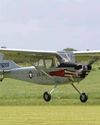
Legend Hobby 13-Foot L-19 Bird Dog/ Cessna O-1
This famous multi-mission single engine observation aircraft served from 1950-1974. From calling out target locations to providing intel/recon information, the Bird Dog was a valued asset in both the Korean War and Vietnam.
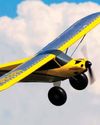
EARN YOUR WINGS
10 Tips for First-Flight Success
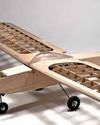
Old School Model Works Fifty Six
The Fifty Six takes its design cues from the original .09- to .15-size Carl Goldberg Falcon 56 of the 1960s. Reworked to incorporate modern, lasercut techniques to make kit building better than ever.
FLYING TWINS Multi-engine warbirds made easy
Let’s face it, there’s just something extra special about twin-engine RC aircraft. Most modelers stop what they’re doing when a twin fires up on the flightline.
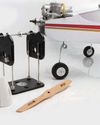
HOW TO BALANCE PROPELLERS
Four easy steps to increase performance and reduce vibration
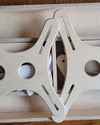
PRODUCT REVIEW: RC PLANE STANDS BENCHTOP MODEL
I’m a sucker for shop stuff. I buy tools I will probably never use just because they are cool, or I might need to use them someday. When Glen from RC Plane Stands reached out about a review, however, I knew as soon as I browsed their website that I would be receiving something I would use a lot, maybe even daily.
SPIRIT OF RHINEBECK AWARD WINNER
A close up of Norman Malinowski’s 1/3-scale Albatros
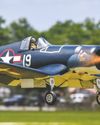
CENTER OF GRAVITY BASICS
The secret to a plane that flies well